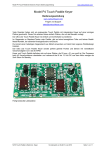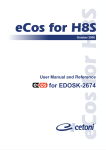Download Stirring Bottle
Transcript
April 2009 Manual Stirring Bottle The information and data contained in this document may be changed without prior notice. No part of this document may be duplicated or transmitted for any purpose, irrespective of the method or means – electronic or mechanical – used for duplication or transmission without the express written authorisation of cetoni GmbH. The General Terms and Conditions of cetoni GmbH shall apply. Agreements deviating from these General Terms and Conditions shall require the written form for their validity. Copyright © cetoni GmbH – Automation and Microsystems. All rights reserved Licence agreement cetoni GmbH grants the Buyer the simple, non-exclusive and non-transferable licence to use the software on a single computer or networked computer system (LAN). Copying or any other form of duplication of the software, in whole or in part, as well as mixing and combining with other software is expressly forbidden. The Buyer may make one single copy of the software for his own backup purposes. cetoni GmbH reserves the right to modify, further develop and/or improve the software or to replace the software with a new development. cetoni is under no obligation to inform the Buyer about modifications, new developments , further developments or improvements, or to make such available to the Buyer. No legally binding assurance of given properties is given. cetoni assumes no liability for damage unless such damage is caused by intent or gross negligence on the part of cetoni GmbH or of its sub-contractors and vicarious agents. Any liability for indirect and for incidental and consequential damages is excluded. Revision 1.0 2 neMIX Manual – Licence Agreement cetoni GmbH Am Wiesenring 6 D-07554 Korbußen Tel.: +49 (0) 36602 338-0 Fax: +49 (0) 36602 338-11 E-mail: [email protected] Internet: www.cetoni.de neMIX Manual - Masthead 3 1 Overviews and Indices 1.1 Table of contents 1 Overviews and Indices ................................................................................................... 4 1.1 Table of contents ................................................................................................ 4 1.2 Revision history .................................................................................................. 6 2 Safety Precautions ......................................................................................................... 7 2.1 Symbols and signal words used ........................................................................ 7 2.2 Standards and directives .................................................................................... 7 3 Fundamental Information .............................................................................................. 8 3.1 Foreword ............................................................................................................ 8 3.2 Purpose .............................................................................................................. 8 3.3 Intended use ...................................................................................................... 9 3.3.1 Safety measures ................................................................................................ 9 3.3.2 Measures for safe operation ............................................................................ 10 3.3.3 Safety installations on the appliance ............................................................... 10 3.3.4 Condition of the appliance ............................................................................... 10 3.4 Warranty and liability ........................................................................................ 11 3.5 Scope of supply ................................................................................................ 12 4 Technical Data .............................................................................................................. 13 4.1 Mechanical data ............................................................................................... 13 4.2 Electrical data ................................................................................................... 13 4.3 Environment ..................................................................................................... 13 4.4 Configuration .................................................................................................... 13 4.5 Stirring capacity ................................................................................................ 14 5 Commissioning ............................................................................................................. 15 5.1 Connection to the syringe pump ...................................................................... 15 5.2 Filling, bleeding and dosing.............................................................................. 16 5.2.1 Carrier medium lighter than particle suspension ............................................. 16 5.2.2 Particle suspension lighter than carrier medium .............................................. 19 5.3 Valves and refilling the syringe ........................................................................ 22 6 Shutting Down .............................................................................................................. 23 4 6.1 Cleaning ........................................................................................................... 23 6.2 Dismantling of the stirring bottle ....................................................................... 23 neMIX Manual – Overviews and Indices 6.3 Assembly of the stirring bottle ......................................................................... 25 7 Transport and Storage ................................................................................................ 26 7.1 Transport ......................................................................................................... 26 7.2 Storage ............................................................................................................ 26 8 Troubleshooting ........................................................................................................... 27 9 Maintenance and Care ................................................................................................. 28 neMIX Manual – Overviews and Indices 5 1.2 Revision history Rev. Date 1.0 27.04.2009 6 Revision Creation of manual (Christine Naber) neMIX Manual – Overviews and Indices 2 Safety Precautions 2.1 Symbols and signal words used The following symbols are used in this manual and are intended to assist you in the navigation through this document: IMPORTANT Signals operating tips and other particularly useful information, whereby no hazardous or damaging situations occur. ATTENTION Signals a potentially damaging situation. If this situation is not avoided, the product or something in its vicinity may be damaged. CAUTION Signals a potentially hazardous situation. If the situation is not avoided, alight or minor injuries and equipment damage may result. 2.2 Standards and directives This appliance has been tested and approved for compliance with the limit values for industrial apparatus of Class 1, Group B. Operation is subject to the following conditions: 1. The appliance must not cause any harmful parasitic radiation. 2. The appliance must be able to process parasitic radiation, including such radiation that could result in an undesirable operation. neMIX Manual – Safety Precautions 7 3 Fundamental Information 3.1 Foreword Thank you for choosing a product from cetoni. This user manual is intended to provide you with the best possible assistance in using the neMIX stirring bottle. You should put the neMIX stirring bottle into operation only after thorough reading of the present manual. We wish you every success in your work with the neMIX stirring bottle. 3.2 Purpose The appliance is intended for thorough mixing of particle suspensions and helps to prevent sedimentation. That permits the dosage or homogeneous concentrations over long periods, an aspect of great importance in many chemical and biological processes. IMPORTANT The stirring of magnetic beads is not possible with this system as a magnetic stirring principle is involved. 8 neMIX Manual – Overviews and Indices 3.3 Intended use 3.3.1 Safety measures The safety of the operator and trouble-free operation of the appliance are only assured when original equipment parts are employed. All warranty claims will be voided in the event of damage caused by the use of third-party accessories or third-party consumables. IMPORTANT The appliance must not be used as a medical product or for medical purposes. The appliance has been developed and built in such a way that hazards during the intended use can be effectively ruled out. Nevertheless, the following safety measures should be observed to avoid any residual hazards. The laws and regulations applicable at the place of use must be observed during operation of the appliance! In the interests of a safe working procedure, owners and operators are equally responsible for compliance with the regulations. The user must inspect the appliance for functional safety and proper condition before any use of the appliance. The user must be familiar with the operation of the appliance. Appliance and lines must be inspected for damage before using for the first time. Damaged lines and plug connectors must be replaced immediately. All cables must be laid in such a way that they do not pose a tripping hazard. Observe the following when working with inflammable or explosive substances: The appliance has no ex-proof installations. Use of the appliance in explosive atmospheres is forbidden! neMIX Manual – Fundamental Information 9 3.3.2 Measures for safe operation Electromagnetic emissions The neMIX stirring bottle is intended for use in all facilities, including those in residential areas and those connected directly to a public supply grid that also supplies buildings used for residential purposes. Electrostatic discharges (ESD) Floors should be of wood or concrete, or should be covered with ceramic tiles. If the floor is covered with synthetic material, the relative humidity must be at least 30%. Electrical interference The quality of the supply voltage should correspond to that of a typical business or hospital environment. Magnetic interference Do not install power lines or other apparatus in the vicinity of the appliance. Portable and mobile radios should not be used closer to the appliance and its lines than the recommended safety distance! 3.3.3 Safety installations on the appliance In an emergency, the appliance can be switched off by pressing on the rotary controller or by disconnecting the power pack; this does not cause any damage to the appliance. 3.3.4 Condition of the appliance Despite the most careful production of the appliance, it may be damaged during use. A visual inspection of the components should therefore be carried out before every use. Pay particular attention to pinched cables, damaged hoses or deformed plug connectors. Should you discover any damage, please do not use the appliance and contact cetoni GmbH immediately; cetoni will ensure that your appliance is returned to a serviceable condition as quickly as possible. On no account try to carry out repairs to the appliance yourself. Opening of the appliance will void all guarantee or warranty claims. 10 neMIX Manual – Overviews and Indices 3.4 Warranty and liability The present appliance left our company in perfect condition. The appliance may only be opened by the manufacturer. If the appliance is opened by unauthorised persons, all guarantee and liability claims will be voided, in particular claims for damages in the event of personal injury. The warranty period is 1 year from the date of delivery. It is not prolonged or renewed by work carried out under warranty. cetoni GmbH considers itself responsible for the safety, reliability and function of the appliance only if installation, settings, modifications, expansions and repairs are carried out by cetoni GmbH or by an authorised body and if the appliance is operated in accordance with the user manual. The neMIX stirring bottle confirms to the fundamental safety engineering standards. We reserve all property rights to circuits, processes, names, software programs and appliances mentioned in this manual neMIX Manual – Fundamental Information 11 3.5 Scope of supply The scope of supply of your stirring bottle includes the following components: Stirring bottle Plug-in power supply unit 4 shut-off needles Two replacement stirring clappers IMPORTANT The neMESYS syringe pump system is required for operation of the neMIX stirring bottle! 12 neMIX Manual – Overviews and Indices 4 Technical Data 4.1 Mechanical data Weight of the stirring bottle .................... approx. 510 g Dimensions (L x W x H) .............. 120 x 103 x 198 mm 4.2 Electrical data Operating voltage ............................................ 24 VDC 4.3 Environment Working temperature ................................ 0°C to 45°C Storage temperature .............................. -40°C to 80°C Working humidity .......... 20% to 80%, non-condensing Storage humidity ........... 20% to 80%, non-condensing 4.4 Configuration Inside volume ..................................................... 1.9 ml neMIX Manual – Technical Data 13 Min. stirring speed ......................................... 14.2 rpm Max stirring speed ....................................... 426.6 rpm Compatible hoses .................. .ID 0.8 mm, OD 1.6 mm 4.5 Stirring capacity The following diagram shows the speed of the stirrer (in upm) as a function of the rotary controller position. 450 400 Umdrehungen / Minute 350 300 250 200 150 100 50 0 0 1 2 3 4 5 6 7 8 Potistellung 14 neMIX Manual – Technical Data 5 Commissioning 5.1 Connection to the syringe pump There are two different starting situations for the operation of the stirring bottle: Situation 1: The carrier medium has a lower density than the suspension to be mixed Situation 2: The carrier medium has a higher density. Should situation 1 exist, install the stirring bottle and connect the hoses as shown in Fig. 1. The configuration for situation 2 is illustrated in Fig. 2. Syringe with carrier medium Application Syringe with suspension Figure 1: Carrier medium with lower density than the suspension neMIX Manual – Commissioning 15 Syringe with carrier medium Application Syringe with suspension Figure 2: Carrier medium with higher density than the suspension 5.2 Filling, bleeding and dosing 5.2.1 Carrier medium lighter than particle suspension Stirring clapper holder Bleeder outlet Carrier medium inlet Stirring chamber Suspension inlet (located slightly lower than the outlet to the application) Laboratory needle Outlet to application Starting situation: The two inlets are stopped. The outlet to the application is closed with a laboratory needle and the bleeder outlet is free. The stirrer is switched off. 16 neMIX Manual – Commissioning Step 1: Start by filling the bottle with the particle suspension. This can be performed manually using a syringe, or by using the neMESYS syringe pump. Step 2: Fill the stirring bottle until the suspension overflows from the bleeder outlet. The stirring bottle has an inside volume of 1.9 ml. neMIX Manual – Commissioning 17 Step 3: Slowly add the carrier medium via the upper inlet using the neMESYS syringe pump until it overflows from the bleeder outlet. Step 4: Close the bleeder outlet using a laboratory needle. Then remove the laboratory needle from the outlet to the application. You can now switch on the stirrer motor by pressing the rotary controller. You are now in a position to deliver your suspension precisely into the application by dosing the carrier medium. The stirring process is stopped by pressing the rotary controller. 18 neMIX Manual – Commissioning 5.2.2 Particle suspension lighter than carrier medium Bleeder outlet Outlet to application Suspension inlet (located slightly lower than the outlet to the application) Stirring chamber Laboratory Carrier medium inlet needle Stirring clapper holder Blind outlet Proceed as follows to operate your neMIX stirring bottle with a carrier medium that is heavier than the particle suspension, i.e. on which the particle suspension ‘swims’. neMIX Manual – Commissioning 19 Step 1: The bleeder outlet / outlet to the application is closed with a laboratory needle, the blind outlet is open. Dose the carrier medium (blue) until a droplet emerges from the blind outlet. Step 2: Close the blind outlet using a laboratory needle so that no air can enter the hose, i.e. pierce the emerging droplet with the laboratory needle. Remove the bleeder outlet needle / from outlet to the the application and start dosing the suspension (red). 20 neMIX Manual – Commissioning Step 3: Dose the suspension into the stirring bottle until the stirring bottle is full and the suspension overflows at the outlet to the application. Then stop the supply of the suspension. Step 4: With the start of dosing of the carrier medium, you start the dosing of your suspension. You are now in a position to deliver your suspension precisely into the application by dosing the carrier medium using a syringe pump. neMIX Manual – Commissioning 21 5.3 Valves and refilling the syringe If you have a syringe pump system with valves available, you also have the possibility of refilling the stirring bottle. For this, use the valve of the dosing unit with the carrier medium syringe. You can remove the valve and leave the plug connected. Connect the hoses to the system as illustrated in the figure below. When the carrier medium is drawn into the syringe, suspension is drawn from a storage vessel into the stirring bottle. The suspension in the storage vessel should be stirred to ensure uniform mixing during filling. IMPORTANT You can disconnect the valves at the knurled screw and place them alongside the syringe pump. In many cases this simplifies the connection of the hoses. ATTENTION Risk of clogging of the valve!! We advise against the use of the valves with coarse solid/liquid suspensions or highly viscous media as deposits and clogging may occur inside the valve or at the connection points. 22 neMIX Manual – Commissioning 6 Shutting Down 6.1 Cleaning When the stirring bottle has been emptied after use, it can be dismantled and cleaned using alcohol, distilled water and compressed air. The body of the stirring bottle is made of Tecason® and can be autoclaved. This applies also to the hoses, fittings, ferrules and the stirring clapper. Instructions for dismantling can be found in the following section. ATTENTION Risk of leakage! Dismantle or disconnect the stirring bottle only after finishing dosing and subsequent cleaning. 6.2 Dismantling of the stirring bottle The stirring bottle must be removed for autoclaving. Please ensure that the stirring bottle is emptied as far as possible before removing. Proceed as follows to remove the stirring bottle. 1. Disconnect the side fittings and pull them off together with hose and ferrule. 2. Loosen the fixing screws using the Allen key. neMIX Manual – Shutting Down 23 The stirring bottle halves can now be separated from one another and the seal ring removed. 3. The stirring clapper can be easily removed by loosening the upper fitting. 4. The dismantled stirring bottle should now consist of the following individual parts: 24 neMIX Manual – Shutting Down The parts coming into contact with the fluid (stirring bottle body, seal ring, fittings, ferrules, hoses and stirring clapper) can be sterilised by autoclaving, by UV radiation or by rinsing with alcohol. IMPORTANT Should you wish to buy replacement hoses, please ensure that the hoses have an outside diameter of 1.6 mm (1/16"). The fittings are standard HPLC fittings with a ¼" UNF-28 thread for 1.6 mm hoses (outside diameter) with matching ferrules. 6.3 Assembly of the stirring bottle Carry out the dismantling steps in reverse order to assemble the stirring bottle. IMPORTANT After every application, inspect the condition of the hoses used and the connection materials for wear during disassembly and replace, if necessary. neMIX Manual – Shutting Down 25 7 Transport and Storage 7.1 Transport Use only the original packaging for transport or shipment of the neMIX stirring bottle. 7.2 Storage Observe also the information in the technical data sheets (chapter 4) for operation and storage of the stirring bottle. 26 neMIX Manual – Transport and Storage 8 Troubleshooting This section is intended to help you resolve problems that may occur during work with the neMIX stirring bottle: No liquid delivered Despite the syringe being filled, no medium emerges from the outlet hose. Procedure Check whether liquid emerges at the hose connections of the stirring bottle. If this is the case, check the tightness of the fittings and retighten, if necessary, or replace the connection elements. neMIX Manual – Troubleshooting 27 9 Maintenance and Care Cleaning of the stirring bottle is described in section 6.1. When used for its intended purpose, the appliance is maintenance-free. Should faults nevertheless occur, please contact cetoni GmbH. 28 neMIX Manual – Maintenance and Care




























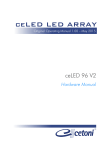


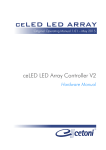



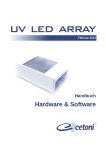
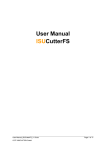
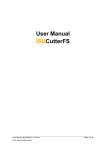
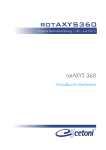
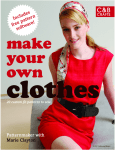

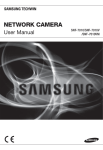
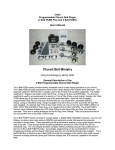
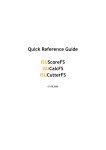
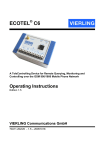
![[PF03] User manual for RED DOT CLUSTERS(EN) - Auto](http://vs1.manualzilla.com/store/data/005713867_1-90b7ac4617a5dc924635c3e0ee039806-150x150.png)
